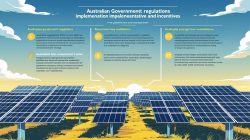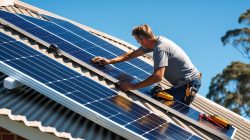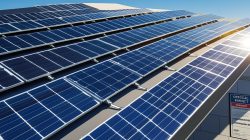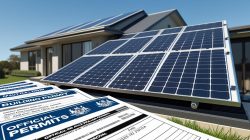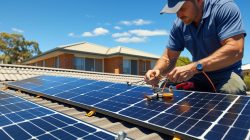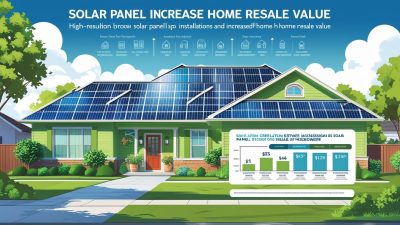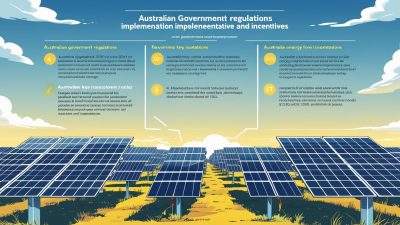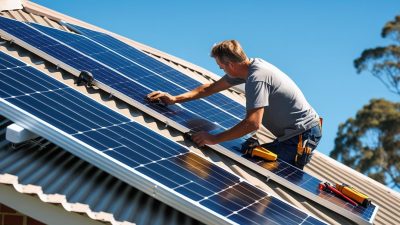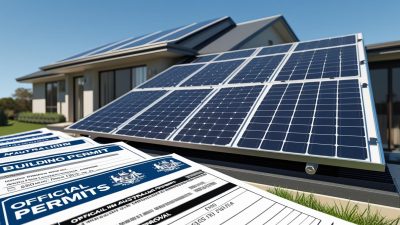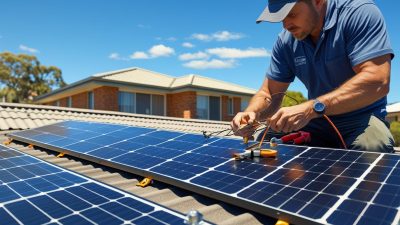Best Locations for Solar Farms in Australia 2025
Bloggerbanyumas.com – Best Locations for Solar Farms in Australia 2025 Australia is poised to become a global leader in solar energy by 2025, capitalizing on its abundant sunshine and vast landscapes. Solar farms are an essential part of this shift, with the country rapidly expanding its solar power capacity to meet its renewable energy goals. The future of solar energy in Australia depends heavily on identifying the best locations for these farms. Strategic land use, optimal climate conditions, and access to infrastructure are just a few factors that influence the decision of where to build these large-scale solar installations. In this comprehensive guide, we explore the best locations for solar farms across Australia in 2025, highlighting key regions, emerging trends, and important considerations for developers.
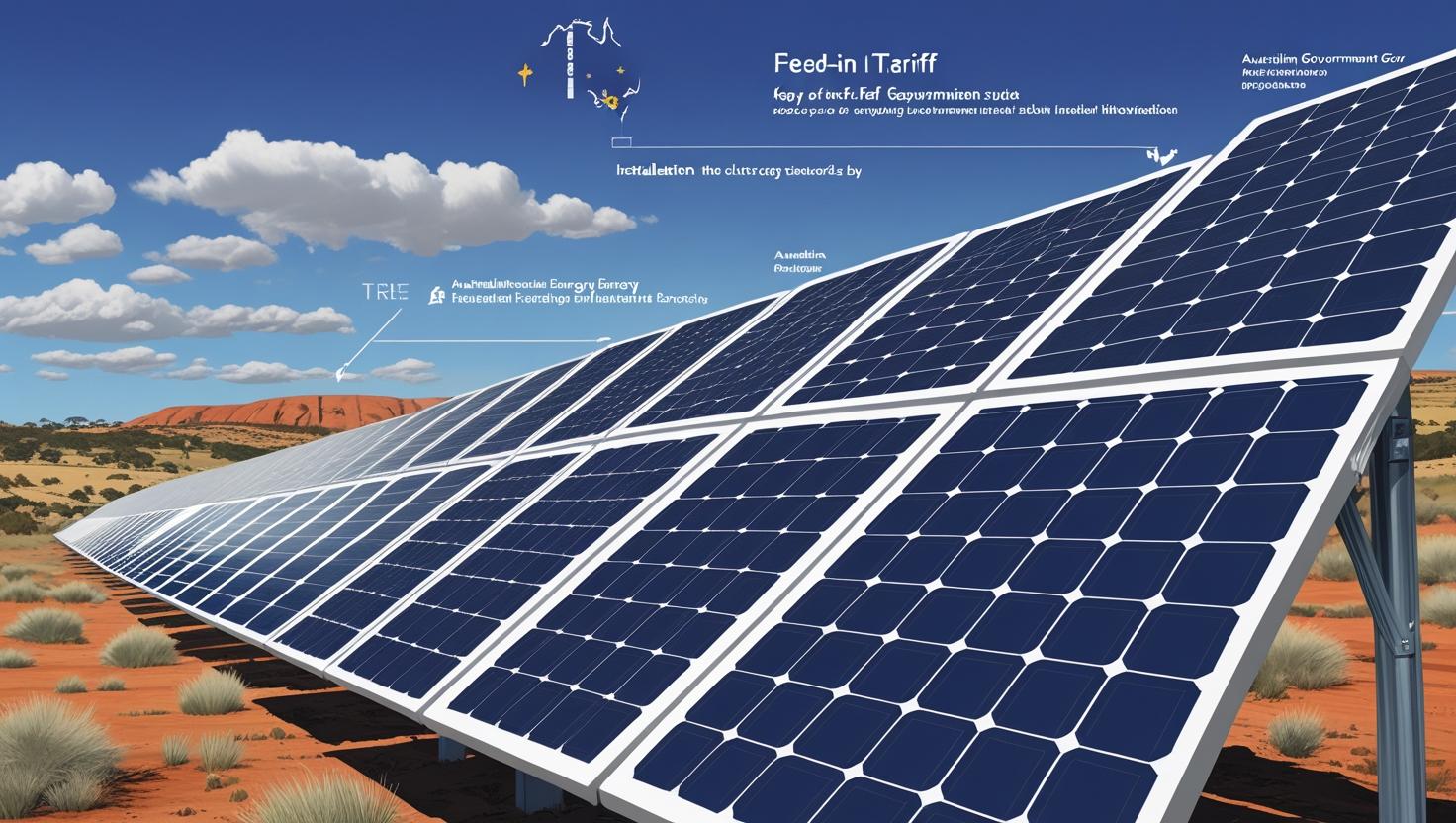
Australia’s Solar Potential: A Bright Future for Solar Farms
Australia’s geographical position makes it one of the sunniest countries in the world, ideal for harnessing solar energy. With abundant sunlight throughout the year, large portions of the country are suitable for solar farm development. By 2025, the Australian energy market is expected to have a substantial portion of its power supplied by solar farms, which will require extensive land and infrastructure development. These solar farms will need to be placed in regions that not only maximize solar energy production but also align with Australia’s environmental goals and regulatory frameworks.
Importance of Location in Solar Farm Success
The success of a solar farm is dependent on several factors, with location being one of the most important. The ideal location must have high solar radiation, minimal cloud cover, and low atmospheric interference. Additionally, accessibility to existing transmission networks, proximity to energy storage facilities, and the availability of land with minimal environmental and social constraints are crucial. The combination of these factors will determine how efficiently a solar farm can produce energy, reduce costs, and integrate seamlessly into the national grid.
Top Regions for Solar Farms in Australia
Australia is home to several regions with exceptional conditions for solar energy generation. These areas offer consistent sunshine, large expanses of land, and are located near key infrastructure to support solar farm operations. Below, we explore some of the best locations for solar farms in Australia in 2025, each offering unique advantages for renewable energy development.
1. Queensland: The Sunshine State
As the “Sunshine State,” Queensland is one of the top regions for solar farm development in Australia. The state enjoys an abundance of sunshine throughout the year, with its vast, arid regions offering the perfect conditions for large-scale solar installations. Queensland is already home to some of the largest solar farms in Australia, and by 2025, it is expected to remain at the forefront of the country’s solar energy revolution.
Why Queensland?
- High Solar Radiation: Queensland benefits from some of the highest solar radiation levels in Australia, making it an ideal location for solar farms. The state receives around 2,000 to 2,500 hours of sunlight annually, ensuring that solar farms can operate efficiently throughout the year.
- Available Land: Queensland’s expansive rural and regional areas offer large tracts of land ideal for solar farm installations. These areas are often less populated, reducing the likelihood of land use conflicts with local communities.
- Renewable Energy Zones (REZs): Queensland has been identified as a key region for renewable energy investment, with several Renewable Energy Zones (REZs) planned in central and northern Queensland. These zones will concentrate solar farm development in areas with optimal conditions for energy generation.
- Infrastructure Access: Queensland is home to a well-developed electricity grid, which will allow solar farms to connect to the National Electricity Market (NEM) easily. Proximity to major cities like Brisbane also offers access to key transmission infrastructure.
Top Locations in Queensland
- Central Queensland: Areas such as Rockhampton, Gladstone, and Biloela are ideal for solar farm development due to their high solar radiation levels and availability of large, flat land. These areas also have access to critical infrastructure and are located near existing transmission networks.
- North Queensland: Regions like Townsville and Cairns are well-suited for solar farm projects due to their consistent sunshine and proximity to the coast. North Queensland is particularly attractive for solar farms aiming to contribute to both local energy needs and export capacity to nearby countries.
2. New South Wales: Expanding Renewable Energy Potential
New South Wales (NSW) is another top contender for solar farm development in 2025. While the state has historically relied on coal-fired power plants, the transition to renewable energy has been accelerating in recent years. The state government’s strong commitment to reducing emissions and supporting clean energy projects has paved the way for solar farms to flourish across the region.
Why New South Wales?
- Solar Resource: NSW enjoys strong solar resources, with some regions receiving between 1,800 to 2,200 hours of sunlight annually. The western part of the state, in particular, offers excellent solar conditions.
- Flat, Open Land: Much of NSW’s rural areas, such as the Murray-Darling Basin and Western NSW, consist of flat land that is ideal for large-scale solar installations. These areas are largely underutilized for other forms of agriculture or development, making them prime candidates for solar farms.
- Government Support: The NSW government has actively supported renewable energy projects, offering incentives and streamlined approval processes for solar farm developers. The Renewable Energy Zones (REZs) in the western regions of the state are expected to be key locations for solar farm projects.
- Grid Connectivity: With established grid infrastructure and an increasing number of solar farms being connected to the NEM, NSW offers good connectivity for large-scale solar projects.
Top Locations in New South Wales
- Western NSW: Areas such as Bourke, Broken Hill, and Dubbo offer vast, open spaces and high levels of solar radiation, making them prime candidates for solar farm development.
- Southwest NSW: Regions around Griffith and Mudgee are also gaining attention for solar farm development due to their strong solar resources and proximity to major transmission infrastructure.
3. South Australia: A Leader in Solar Energy
South Australia has long been a leader in renewable energy, and the state continues to lead the charge in solar power generation. With a long history of integrating renewables into its energy mix, South Australia has set ambitious renewable energy targets for 2025, which will further boost the demand for solar farms.
Why South Australia?
- High Solar Irradiance: South Australia benefits from some of the highest levels of solar irradiance in the country, with many areas receiving up to 2,200 to 2,500 hours of sunlight annually.
- Dry, Arid Landscape: The state’s vast, arid landscape, particularly in the Flinders Ranges and Outback, provides ample space for large-scale solar farms. These areas are also sparsely populated, reducing the likelihood of land use conflicts.
- Energy Storage and Integration: South Australia is pioneering in energy storage, with projects like the Hornsdale Power Reserve demonstrating the potential of integrating large-scale battery storage with solar farms. This enables solar farms to provide consistent energy to the grid, even when the sun isn’t shining.
- Established Renewable Energy Zones (REZs): South Australia has established several REZs to attract solar farm developers. These zones are located in areas with high solar radiation and access to transmission infrastructure, making them ideal locations for large-scale solar installations.
Top Locations in South Australia
- North and Far North Regions: The Outback regions of South Australia, including Coober Pedy, Port Augusta, and Pimba, are key areas for solar farm development due to their excellent solar resources and large, undeveloped land areas.
- Mid-North: Areas around Whyalla and Peterborough offer a combination of strong solar resources and access to infrastructure, making them prime locations for solar farm development.
4. Western Australia: Tapping into Remote Solar Resources
Western Australia (WA) is poised to become a key player in Australia’s solar farm expansion. The state’s vast, remote regions provide excellent conditions for large-scale solar farm development, and WA’s proximity to key international markets positions it well for solar energy exports.
Why Western Australia?
- Abundant Sunshine: WA is one of the sunniest regions in Australia, receiving up to 3,000 hours of sunlight per year in some areas. The state’s large, flat desert areas are particularly well-suited for solar farm development.
- Low Population Density: Much of WA’s land is sparsely populated, which allows for large solar installations without disrupting local communities.
- Strategic Location for Export: Western Australia’s location near Southeast Asia makes it an attractive option for exporting solar energy via undersea cables, creating new opportunities for regional energy markets.
- Renewable Energy Zones: WA has established REZs in regions like the Pilbara and Goldfields-Esperance, which will help to streamline solar farm development and reduce project costs.
Top Locations in Western Australia
- Pilbara Region: The Pilbara region, known for its vast, flat deserts and abundant sunshine, is an ideal location for solar farm development. Areas like Karratha and Port Hedland offer strong solar resources and access to infrastructure.
- Goldfields-Esperance: The Goldfields region, including areas like Kalgoorlie and Esperance, is another key area for solar farm development due to its favorable solar conditions and proximity to energy transmission networks.
Key Considerations for Solar Farm Development in Australia
While the regions mentioned above offer excellent conditions for solar farm development, there are several key considerations that developers must take into account before beginning a project. These include:
- Land Use and Environmental Impact: Developers must ensure that the land selected for solar farm installation does not interfere with critical agricultural activities, protected ecosystems, or cultural sites.
- Grid Access: Proximity to the national grid and existing infrastructure is essential for connecting solar farms to the electricity market.
- Community Engagement: Developers must engage with local communities to address any concerns about the project and ensure that the solar farm’s benefits are shared with the surrounding areas.
- Regulatory Approvals: Solar farm projects in Australia must comply with federal, state, and local regulations, including environmental assessments and planning permissions.
Conclusion
By 2025, solar energy will continue to play a pivotal role in Australia’s transition to a sustainable energy future. The best locations for solar farms in Australia are those that provide high solar radiation, ample space for development, and access to critical infrastructure. Queensland, New South Wales, South Australia, and Western Australia are among the top regions for solar farm development, each offering unique advantages in terms of solar resources and strategic location. With the continued support of government policies and advances in solar technology, these regions will help propel Australia toward achieving its renewable energy goals in 2025 and beyond.


